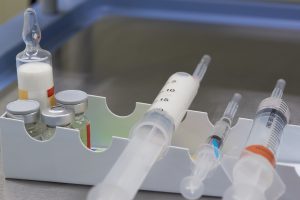Accuracy of drawing up liquid medications by veterinary anaesthetists and nurses
Accuracy of drawing up liquid medications by veterinary anaesthetists and nurses

Requires membership/payment
In our edition of: Dec 2023
In our categories of: practice management
our summary:
Cambruzzi, M., Knowles, T. and Macfarlane, P. (2023) Accuracy of drawing up liquid medications by veterinary anaesthetists and nurses. Veterinary Anaesthesia and Analgesia, 50 (6), pp. 502-506.
The aim of this prospective blinded randomised study was to evaluate the accuracy with which veterinary anaesthetists and nurses draw up different volumes of liquid and to investigate factors affecting their performance.
Study participants were seven diplomates and six residents of the European College of Veterinary Anaesthesia and Analgesia and six anaesthesia nurses.
Each participant was asked to draw up five randomly generated target volumes (0.01 to 1.0 mL). Each target volume was drawn up to 20 times in random order using a new 1 mL syringe attached to a new 23 gauge needle. Participants opened a new vial of water for injection and used it for all the measurements. Once the participant had drawn up the target volume the syringe was passed to the investigator, who was blinded to the target volume, for weighing using an electronic balance. The same investigator oversaw all the participants and weighing process.
Between each measurement, the water was expelled from the syringe through the needle. Then the syringe, needle and any residual water were weighed, and the total mass was recorded as control for the next measurement. The change in mass of the syringe was used to calculate the actual volume of liquid drawn up.
A total of 1,900 measurements were available for initial analysis, 100 from each of the 19 participants. However, the initial results found large percentage errors for target volume ≤ 0.04mL, and so these measurements were excluded from further analysis.
Results showed that there was a higher proportion of measurements underestimating the target volume (52.3%) than overestimating (42%) whilst only 5.7% were on target. There were no significant differences for any of the between-participant variables (years of experience, age, gender, whether wearing glasses and staff grade). There was a significant effect of order with absolute error decreasing by 1% from the first to the last measurement.
Limitations of the study include the awareness of participants to the study objectives which may have affected their behaviour and that the experiment was performed in a nonclinical situation.
This study provides evidence that accuracy of drawing up medications decreases as the target volume becomes smaller. This highlights the importance of awareness of the potential inaccuracy of small medication volumes and that dilution of medications for volumes less than 0.19 mL should be considered.
Claiming CPD for reading inFOCUS articles
Reading and reflecting on articles can count towards your CPD, and we have a template to help you with the process.
Image copyright attribute: teeradej







Leave a Reply
Want to join the discussion?Feel free to contribute!